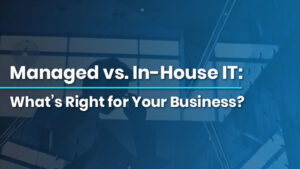Introduction
Individuals can engage in various entertaining activities on the internet, including social media sharing and online purchasing. To fully appreciate the experience, it is best to know what less honorable characters are. This article will cover Identity Theft, its type, and prevention.
The financial situation and credit scores of those impacted by identity fraud may deteriorate. They might also struggle with future financial security anxiety. Although it is crucial to be mindful of the risk of identity theft, this should not raise any red flags. Several methods and technologies can assist in safeguarding individuals so that one can keep taking advantage of all that modern technology offers.
Check out our Cybersecurity Courses now if you want to start your career in Cybersecurity.
What Is Identity Theft?
Identity theft is using another person’s financial or personal information, typically for financial benefit. A fraudster may steal sensitive data such as names, birthdates, Social Security numbers, information from driver’s licenses, residences, and credit card or bank account numbers. Once they have this information, they might use it to make purchases and apply for credit cards.
Types of Identity Theft
Identity theft typically takes place intending to make money. The five most typical forms of identity theft are as follows:
Financial identity theft is the term used to describe identity theft that involves the unauthorized use of personal financial information. This may involve theft:
- Credit card numbers
- Bank account information
- Social Security number
If anyone suspects they may have been a victim of financial identity theft, report any illegal conduct and notify the financial institution instantly.
It is called criminal identity theft when someone commits a crime using personal information. Criminal identity theft victims frequently end up in jail after being falsely accused of a crime, which can prevent them from finding employment and cause creditors to refuse them credit or loans. Several indicators indicate that one might be a victim of criminal identity theft.
- Court-ordered summons
- Arrest warrants
- Negative background checks
Protecting the identification documents, credit card numbers, passports, and other items that can be used to identify the user is the greatest strategy to prevent criminal identity theft. Any lost identification documents should be reported right away to the appropriate authorities.
It is known as medical identity theft, when someone uses personal information to fraudulently get medical care, services, or goods. This may consist of:
- Medical or health insurance fraud
- Stealing prescriptions for drugs
- Gaining access to medical devices
Life may be significantly affected by medical identity theft since it may result in the entry of fraudulent information into medical records. This could lead to issues with medical care and make it challenging to acquire the required treatment.
A real type of fraud known as biometric ID theft involves taking or impersonating a person’s physical or behavioral traits to unlock a device. For example, imagine using facial or voice recognition to unlock your phone or other devices. Hackers can profit greatly from biometric ID theft by gaining access to digital wallets and a wealth of personal data. Update your gadgets as instructed to protect yourself from this kind of identity theft. Also, be sure the organization requesting your biometric data is storing it securely and safely.
A fully new fraudulent identity is created using a combination of true and false information in a type of fraud known as synthetic identity theft. Children and elders who do not utilize their SSNs frequently are the most frequent targets.
Using fully false information allows for the commission of synthetic identity theft. Due to the difficulty in being discovered by businesses, this fraud is becoming more widespread. Using a fake name can be done for several things, including opening new accounts, getting loans, and even declaring bankruptcy.
When thieves conduct fraud using a child’s identity, it is known as child identity theft. Criminals find it simpler to use children’s identities because they frequently lack a credit history and financial accounts. A family member or relative with easy access to personal information like birthdates and places of birth frequently steals children’s identities.
Checking to see if a child has any open credit card accounts or credit reports is a smart technique to prevent child identity theft. One should immediately notify law enforcement about fraudulent activities if any are discovered. Next, get in touch with credit bureaus to freeze the associated SSNs and connected accounts.
The sophistication of this kind of identity theft has increased recently. One mail fraud scheme involves taking checks out of mailboxes, changing them, and then cashing them. In order to make unlawful purchases, other con artists have been known to intercept debit and credit cards. Also, think twice before discarding any message. Account statements, banking information, and other sensitive details may be stolen and used against you.
How to Prevent Identity Theft
One may take a few easy measures to help protect personal information and stop data loss. Here are some pointers:
-
Take Cautious While Deciding To Whom To Disclose Personal Information
Give it only to persons and companies one knows and trusts. Any emails or texts requesting personal information should be treated suspiciously, and the sender should be notified immediately.
-
Protect Important Data with Security Software
Whether online or offline, this will help keep the information secure. To secure all incoming and outgoing files, keep the anti-virus software updated and functioning at all times.
-
Do Not Use Public Wi-Fi Networks
Criminals can easily hack onto the computer and steal important data using public, unprotected networks.
-
Check the Credit Report and Credit Card Statements Regularly
Users can prevent identity theft if they regularly check for any indicators. Individuals can set up fraud alerts and identity theft protection services with the bank, credit card companies, and other credit monitoring services to be informed of any unusual activity.
-
Have a Recovery Plan in Place
Make sure users are prepared for identity theft and know what to do to stop the thief from using their identity further.
Identity Theft in 2022
In comparison to other countries, the United States experiences almost three times as many identity theft incidents. According to reports, nearly 33% of Americans have experienced identity theft attempts at some point in their life. According to experts, this figure may rise sharply this year.
The Future of Identity Theft
According to studies from recent years, it appears that identity theft rates will continue to rise in the future and transition toward more “digitally integrated” lifestyles, as the AARP has put it. Digital fraud is anticipated to increase instead of physical fraud, in which the offender physically takes items like credit cards and social security cards.
Conclusion
Identity theft is a serious threat to online security now and in the future. Identity theft victims can be anyone. Therefore it is critical to take the recommended precautions. While those who use shared computers are likewise at risk, everyone in today’s society has the potential to be vulnerable. However, people become more irresponsible when they handle personal information carelessly and ignore warning indications. Long-term effects of identity theft may not only hurt victims individually but can negatively impact the economy and businesses.







